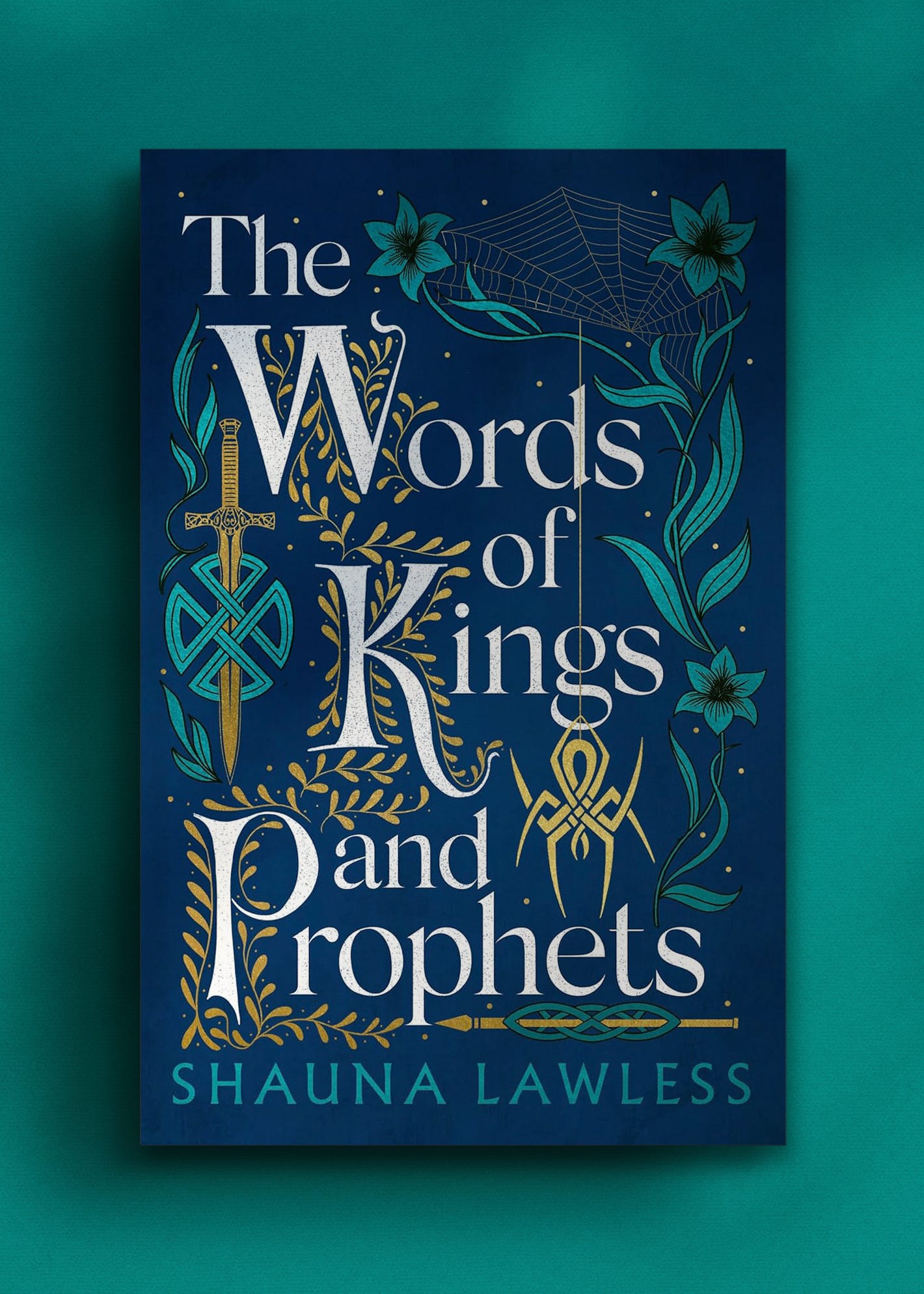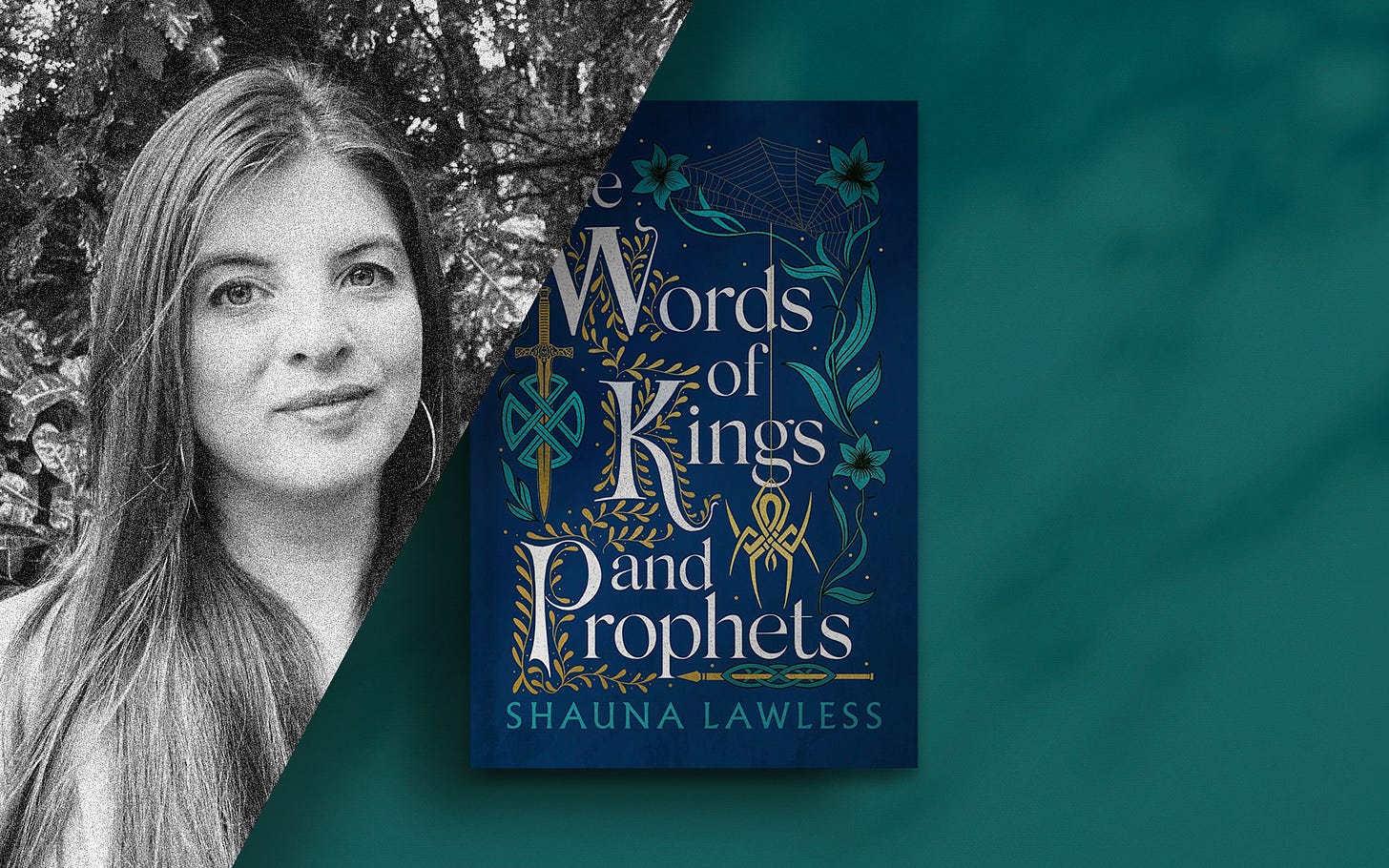Gormflaith: An Irish Queen
Shauna Lawless investigates the life of an elusive and beguiling figure
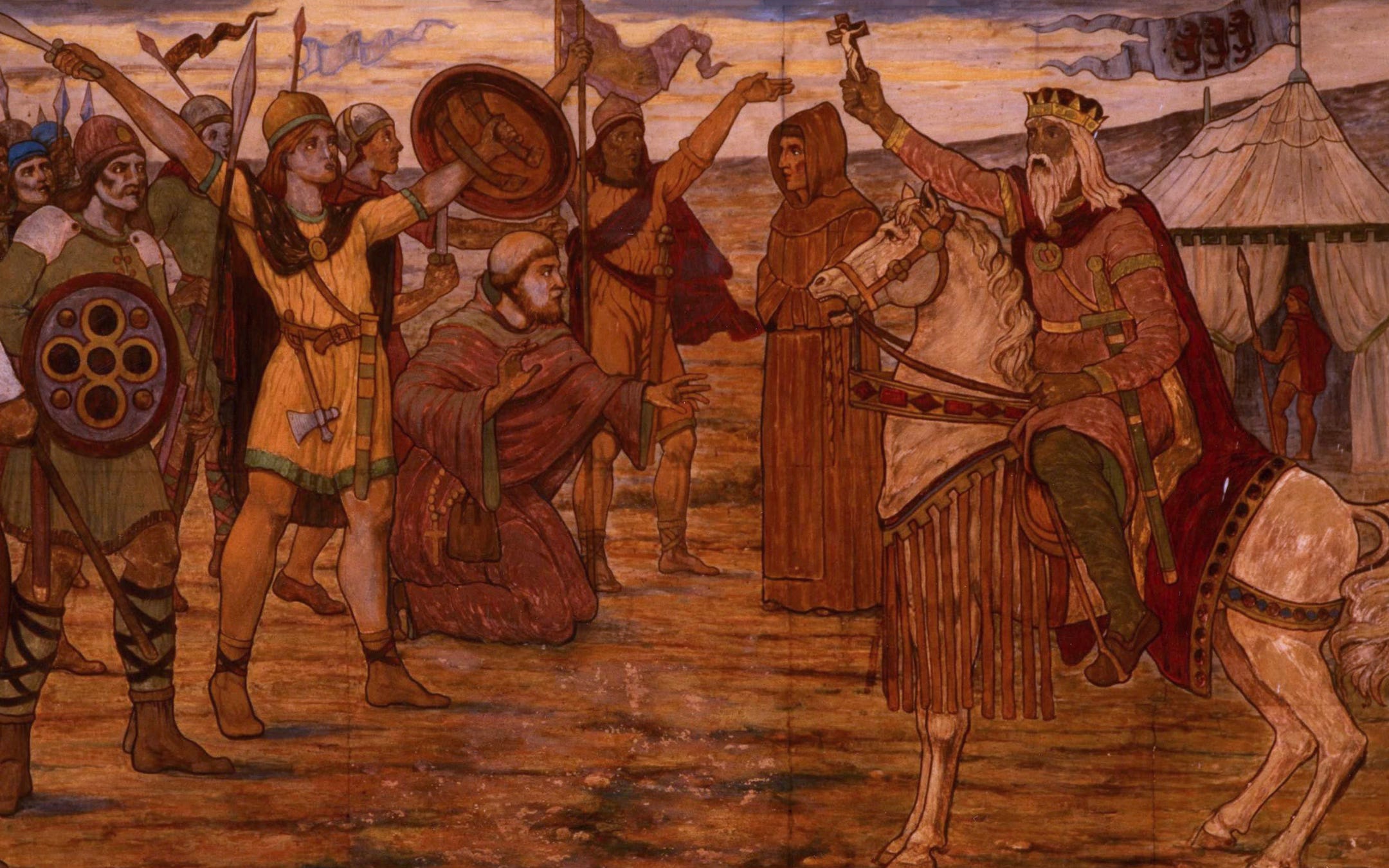
A thousand years ago a powerful woman called Gormflaith lived in Ireland. A daughter of the King of Leinster and the wife of the King of Dublin, the details of Gormflaith’s life nonetheless remain difficult to define. Long maligned by historians who have portrayed her as a conspirator and a temptress, Gormflaith has even been accused of orchestrating the great Battle of Clontarf. But is this fair?
The author Shauna Lawless tells us more about this enticing figure from Ireland past.
Gormflaith, a character from my novels The Children of Gods and Fighting Men and The Words of Kings and Prophets, is based on a real woman who lived in Ireland over one thousand years ago. There are only a few documents that record her existence, the most interesting being the Cogadh Gáedhel re Gallaibh, a piece of Irish literature commissioned by King Brian Boru’s great grandson, and the Njáls Saga, a thirteenth-century Icelandic saga.
These records show that Gormflaith was married to the King of Dublin, Amlaíb Cuarán (in Old Norse Olafr Sigtryggsson), and then to the King of Munster, Brian Boru, who later became High King of Ireland. While they differ on the details, they do agree very much on Gormflaith’s character. She was a warmonger. A temptress. A key antagonist in the lead-up to the Battle of Clontarf in 1014 AD.
To ponder the true character of Gormflaith, we must examine the reports that present her negatively and understand the world and culture into which she was born. As always, I find setting the scene the all-important starting point, and at the turn of the eleventh century, Ireland was in a state of upheaval. The Viking Age had come… and it was evolving.
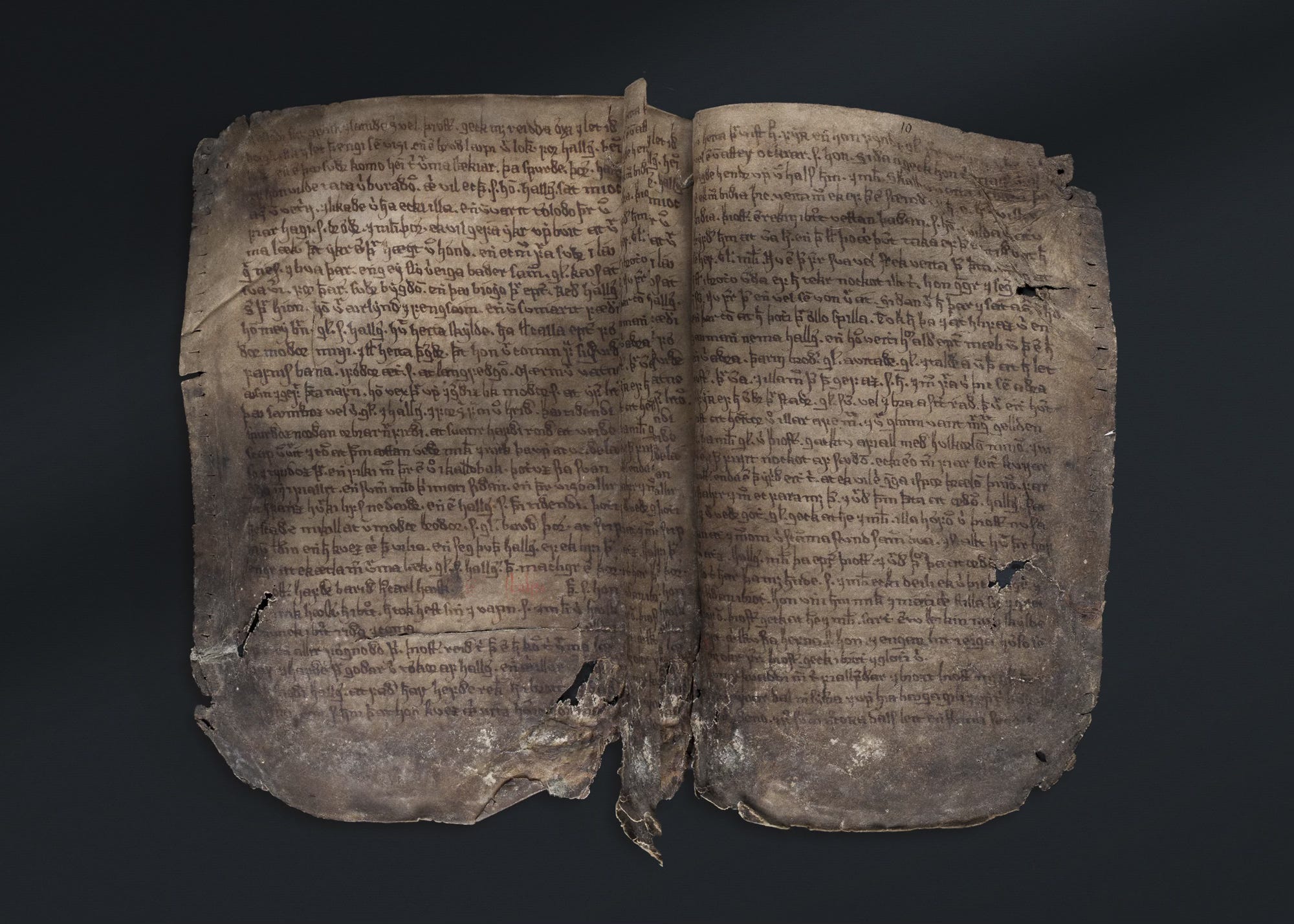
Initially, as in England, there were many Viking attacks, raids and the taking of slaves in Ireland. However, by the mid to late 900s, this had changed. The raiders, or the foreigners as the Irish called them, were beginning to settle. They had started to ally with the Irish kings, agreeing to fight for them in exchange for land.
Ports were established at Dublin, Limerick, Waterford, and Wexford. Markets grew in these cities, and wealth flooded into Ireland. With this new friendship came marriage contracts between the highborn from both sides. The Vikings were eager to strengthen their claims to the land they had settled upon by marrying into the local nobility. This nobility was eager to have Viking warriors fight for them rather than fight for rival Irish kings.
It is important to note that conflicts between the various regional powers were commonplace, and the annals of the time record more domestic fights than those between the Irish and the Vikings! King Brian Boru is also something of a phenomenon at this time, as never before had the high kingship been held by a man outside of the O’Neill clan. His ascendancy had not come easily, and Brian fought many battles throughout the whole of Ireland to make this so. If Gormflaith was a warmonger, so were many of the men surrounding her.
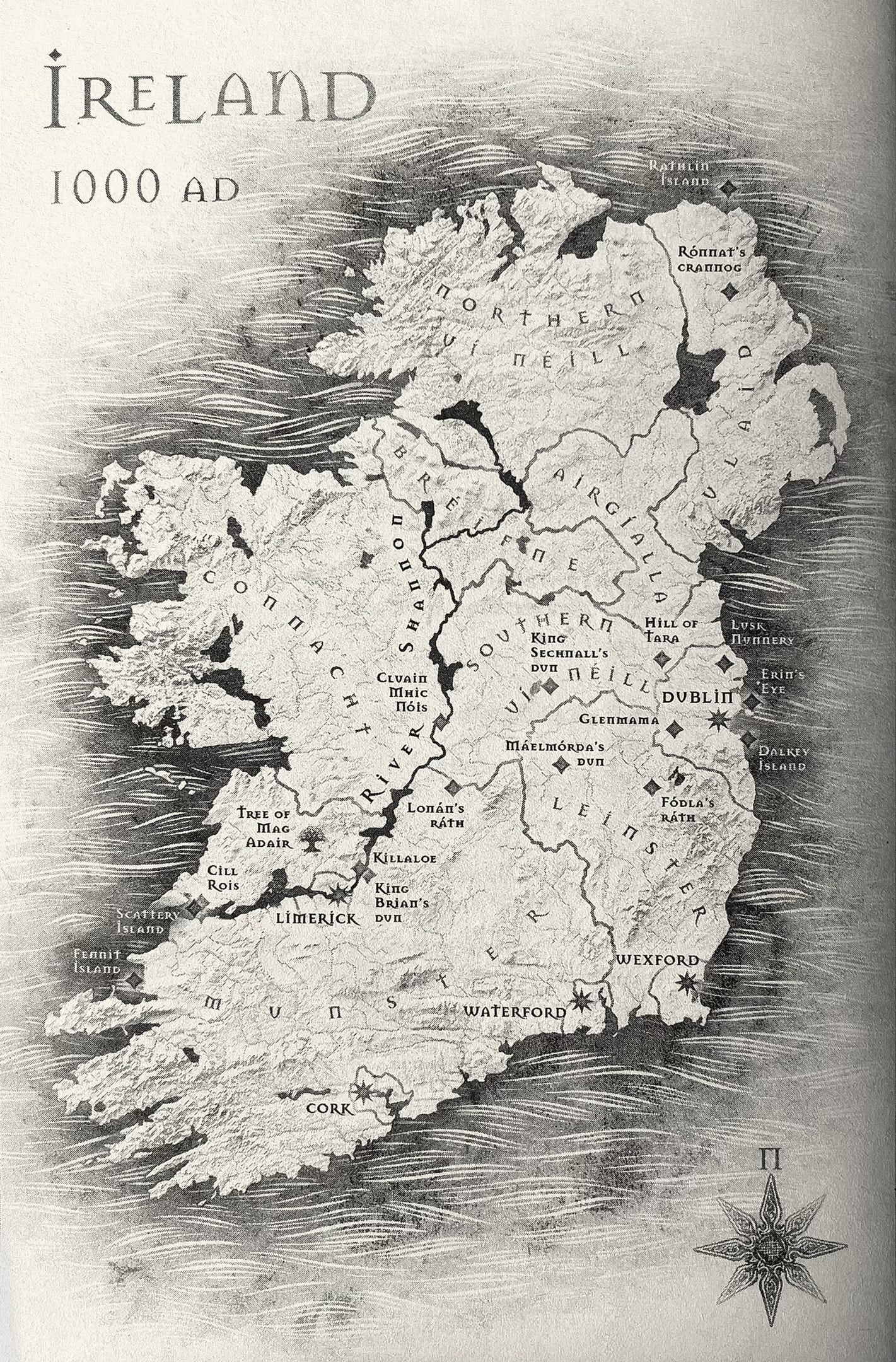
Gormflaith also lived through a time of significant religious change. Records show that Ireland’s conversion to Christianity began in the sixth century, and indeed, it is often thought of as the ‘land of saints and scholars’ during this period. However, by the eleventh century, this reputation had waned. Visiting members of the clergy were no longer impressed. Christian in practise, pagan in fact, was how they viewed the Irish.
There were multiple reasons for this, but one was that remarriage was common at the time. This connects with another accusation that was later levelled at Gormflaith by historians: that she was divorced and used her single status as a ploy to assist her son, Sitric Silkbeard, by offering her hand to those who would fight for him.
Was this so strange? No, it wasn’t. As I’ve already stated, divorce happened all the time. Marrying for strategic reasons was also common. King Brian Boru married three of his daughters to former enemies to prevent these rivals from rising against him in the future. The negative connotations of Gormflaith's divorce and potential strategic remarriages are therefore unfair, and I believe much of the criticism of her has occurred because in earlier studies she was examined through a Christian lens and little account was taken of the culture at the time.
So, now on to the details.
We know that Gormflaith was the daughter of Murchad Mac Fionn, King of Leinster. We also know that her first husband was Amlaíb Cuarán, King of Dublin. The marriage between Amlaíb and Gormflaith was likely one of strategy and alliance, perhaps to secure peaceful relations between Leinster and Viking Dublin. During Amlaíb’s marriage to Gormflaith, they are known to have had one son. This was Sitric, also known as Sitric Silkbeard, a future King of Dublin.
After this, we know that Gormflaith married King Brian Boru after the death of Amlaíb in 981 AD. Historians are unsure as to when this happened. Some sources cite the 980s, others say that the marriage took place after the Battle of Glenmama in 999 AD. Either way, we know that Brian and Gormflaith had a son called Donnchad. The family dynamic was further complicated by the marriage between King Brian’s daughter Sláine and Gormflaith’s son Sitric. The families of Dublin and Munster had become very intertwined.
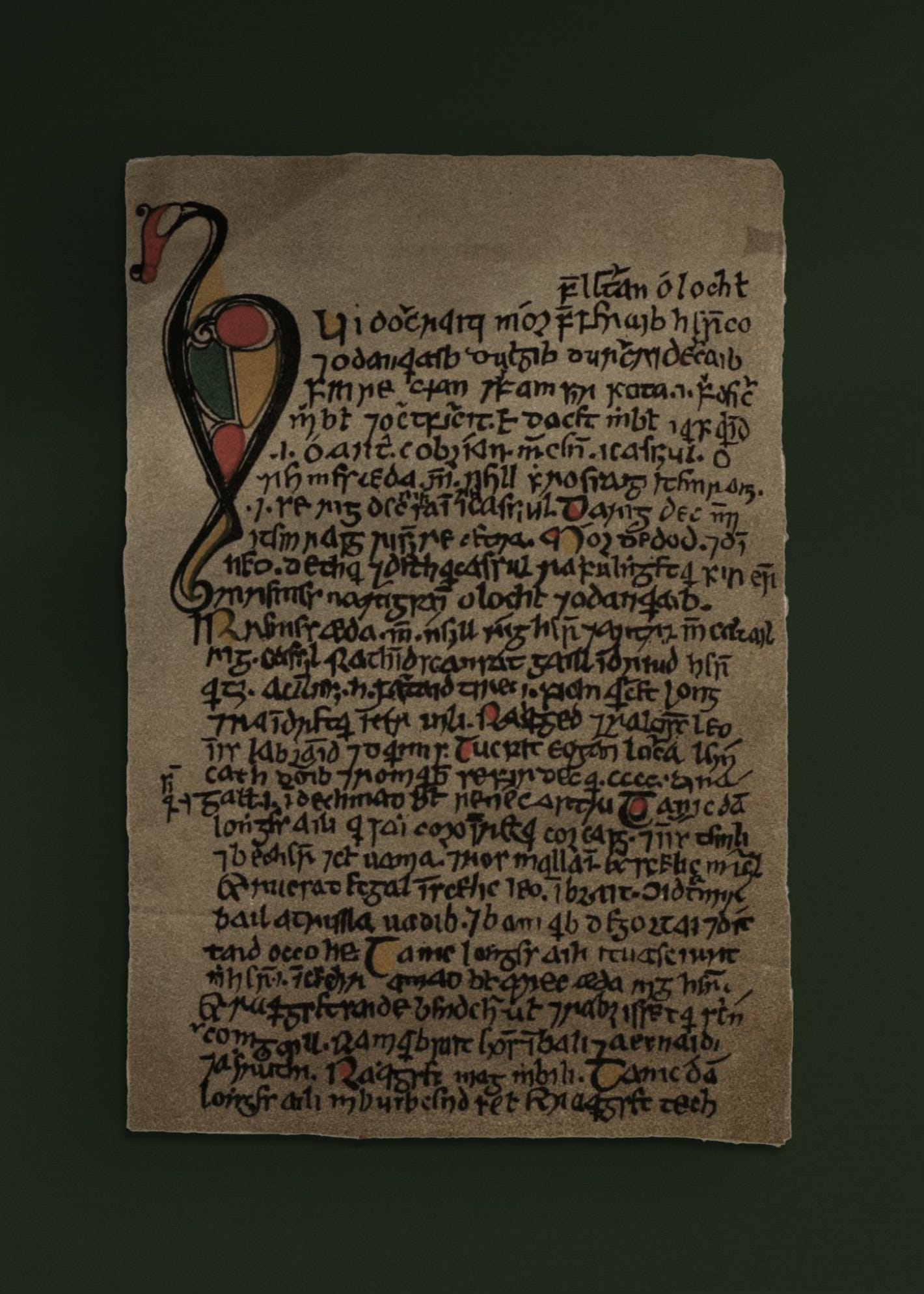
There are also arguments between historians as to how long this marriage lasted. The Cogadh Gáedhel re Gallaibh says that Gormflaith and Brian were still married at the time of their falling out in 1013 AD, while the Njáls saga states they were already divorced. Both agree that she incited a war, by causing her son and brother to turn against her husband/former husband.
Njáls saga has this to say:
‘She was filled with hatred for King Brján after her divorce that she would have wished to see him dead… Kormlod (Gormflaith) was forever egging on her own son Sygtryggr to slay King Brján…’
And so, we move onto the Battle of Clontarf and Gormflaith’s role in it. This battle was one of the most significant ever to occur in Ireland. It was fought between King Brian and various kings, of Munster, Meath and Connaught, who had sworn oaths to him. Against him stood Sitric Silkbeard (Gormflaith’s son), The King of Leinster (Gormflaith’s brother), Sigurd of Orkney (who, according to the Njáls saga, was now betrothed to Gormflaith) and other Viking warriors. It seems that Gormflaith was the link between all the men, making her part in it of interest. Had she truly orchestrated the whole thing?
This is a big question, but I would ask if this battle would have happened without Gormflaith’s ‘warmongering’? My answer is yes. It is no coincidence that the Battle of Clontarf happened only months after Svein Forkbeard’s invasion of England. The Battle of Clontarf, I feel, was fought for land and prestige. Gormflaith, in my mind, was merely a player in a larger story – a queen who wanted her son to gain power at a time when traditional power structures were changing.
If King Brian (a man who was not an O’Neill) could become High King of Ireland, perhaps any king could? Perhaps a Viking king could? If not Sitric, Máelmórda, Gormflaith’s brother, might have had his eyes on this title. Success for her family would have been important to Gormflaith. Given the number of kings and famous warriors who fought in this battle, it is fair to say military success was important to all of them too.
The records from various monastic annals show that the Battle of Clontarf was successful in stopping an influx of Viking raiders taking over more land and ports in Ireland. However, thousands of men died at the battle, including King Brian Boru himself and one of his rivals, Sigurd of Orkney. This means a former husband and a potential new husband of Gormflaith’s died on the same day. And with huge loss, blame must be placed somewhere. Gormflaith, in my opinion, became the scapegoat. However, to me, she is only guilty of behaving the same way as the men around her.
After the Battle of Clontarf, Gormflaith disappears from records. The final record of her is her death in 1030 AD, marked by an entry in the Annals of Tigernach:
‘Gormflaith, daughter of Murchad mac Fionn, mother of Sitric, son of Amlaíb Cuarán, king of the Foreigners, and of Donnchad, son of Brian, King of Munster, dies.’ •
This feature was originally published September 2023.
Shauna Lawless is an avid reader of Irish mythology and folklore. As an Irish woman, she loves that Irish mythology has inspired so many stories over the years, however, she wanted to explore the history and mythology of Ireland in a more authentic way. She lives in Northern Ireland with her family.
Unseen Histories relies on your patronage to operate. You can support us by purchasing a book via the links, from which we will receive a small commission. Thank you for your support.
The Words of Kings and Prophets
Head of Zeus, 6 June, 2024
RRP: £9.99 | ISBN: 978-1803282695
“Lawless blends fantasy with historical fiction to great effect”
– SFX
Power fades but fire endures...
Clouds of war gather for mortals and immortals alike as the Irish kingdoms strive for supremacy.
Gormflaith, a Fomorian and unhappy queen of mortal king Brian Boru, schemes to destroy her sworn enemies, the Descendants. As her plans take an unexpected turn, Gormflaith discovers her magic is more powerful than she ever realised – but at what cost?
Descendant healer Fódla dwells disguised in the mortal world, seeking to protect her young nephew – but the boy has secrets of his own. Fódla must do all in her power to keep him hidden from those who would use him for evil.
When a mysterious man comes to King Brian's court, his presence could spell disaster for both Gormflaith and Fódla – and for Ireland herself. For he is Tomas, an ambitious immortal – and he will do anything to see his plans become reality…
The sequel to the critically acclaimed The Children of Gods and Fighting Men, The Words of Kings and Prophets is a powerful historical fantasy novel by Shauna Lawless, set in war-torn medieval Ireland. Perfect for fans of George R.R. Martin and Genevieve Gornichec.
“Utterly magical and completely captivating”
– Sarah Underwood
“Celebrates the extraordinary history and cultural traditions of Ireland while giving voice to the women who helped shape it.”
– Lucy Holland
Related
Interview: The Words of Kings and Prophets with Shauna Lawless
A thousand years ago Irish society was being reshaped by the Vikings. After years of opportunistic raiding, the Norsemen’s behaviour was changing. As the new millennium approached they were becoming a permanent present on the island.
This was the age of powerful figures like Brian Boru. It is also the historical setting for an enthralling series of historical fantasy novels by the author Shauna Lawless. The first in this trilogy, The Children of Gods and Fighting Men, was published in 2022. Now, The Words of Kings and Prophets, Lawless's second book, is being released. Here she tells us more about the Ireland of the year 1000, and of the rich mythology that has come down to us today.
Author Photograph © Gerald Lawless.
Book jacket design by Micaela Alcaino.
You can read all our long-form features, here.
Subscribe to Unseen Histories for the very best new history books, read author interviews and long-form pieces by the world’s leading historians.








